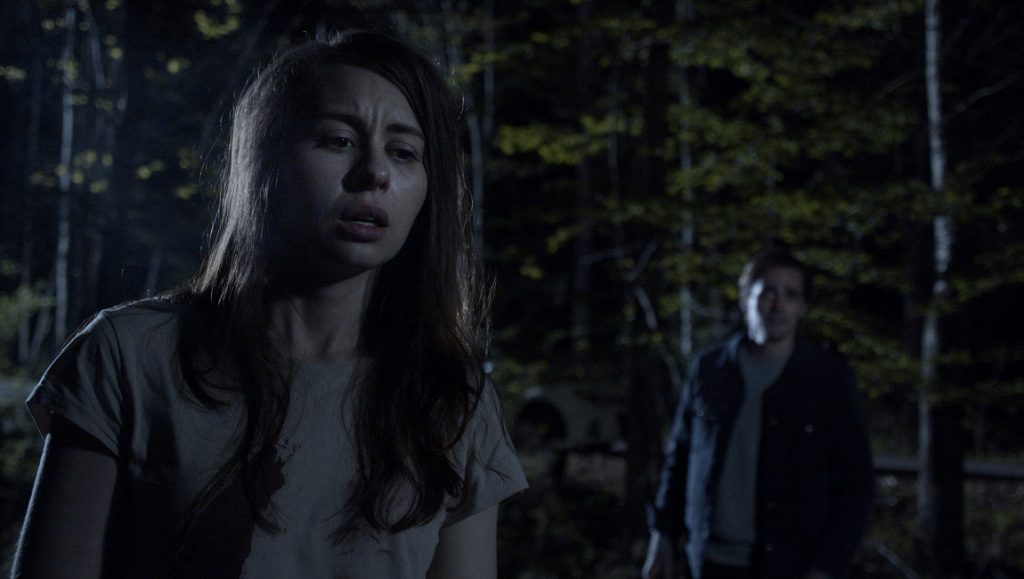An Unquiet Grave fails to deliver even scares, let alone substantive plot or character.
Horror is a genre that tends to thrive on economy; it doesn’t take a big budget to deliver scares, but rather just a concept that lends itself to the creation of scares and a director who understands how to properly utilize cinematic form to those genre-specific ends. Even a big-money studio film like The Conjuring is best remembered for a simple game of hide-and-seek involving candlelight and clapping. But even by those standards, new Shudder original An Unquiet Grave is exceptionally small-scale. A 75-minute two-hander about one man’s attempt to resurrect his deceased wife with the help of her identical twin sister, the film barely has the time to make any sort of impact, let alone to develop characters worth the viewers’ emotional investment. Forgiveness comes easy to horror efforts that at least make good on the implicit promise of the aforementioned scares, but here, director/co-writer Terence Krey barely musters even a fleeting few moments of unease, which quickly pass.
Jamie (Jacob A. Ware) is still mourning the loss of his wife, Jules, who perished one year ago when their car was struck by a drunk driver. He shares a fractured relationship with Jules’ sister, Ava (Christine Nyland, who also co-wrote the script), yet needs her help when he discovers a way to bring Jules back from the dead. Thankfully, the movie does not get into the logistics of the resurrection process, as any explanation would certainly be absurd. As loosely outlined, it involves drawing some symbols in the dirt at the site of Jules’ death, the burning of sage, a blindfold, and some blood; this actually makes for the film’s most successful sequence, with Krey understanding the old horror film philosophy that what remains unseen is often more unnerving than what’s made explicit. Naturally, however, things do not go as planned, with Jamie and Ava left to suffer the consequences of their actions.
Thematically, An Unquiet Grave has nothing of interest to say in regards to overcoming loss and the various ways grief can change an individual — grief-horror is essentially a thriving subgenre of its own at this point, but this film merely rides those coattails without contributing anything new. But the biggest problem is that the film is far too rushed in its storytelling, willfully skipping from scene to scene without realizing the detrimental effect it has on manufacturing sustainable tension. Its simple premise would have benefited greatly from a slow-burn approach, particularly in regards to the fallout of the resurrection ceremony, as Jamie begins to question the morality of his attempts at playing God, and questions of punishment and haunting begin to plague his consciousness. The mystery is so hastily presented that the film’s attempts at scares hold no weight, and thus register little effect. It doesn’t help that the movie is so gung-ho to get to an endpoint that what it ultimately produces is an anti-climax. The only real thing of note is the film’s final shot, and more specifically the exact moment when Krey — who also pulled duty as editor — chooses to cut to black, mid-sentence. It’s a bold choice, certainly, but at the same time, one that feels distinctly like something of a cop-out, as the mic-drop cut precludes what would likely have been the film’s most intriguing scene, addressing the consequences of all the preceding plot. It’s just another instance of An Unquiet Grave lacking the substance it needs, and while it isn’t an outright bad film per se, it’s also just not much of a film, period.
You can currently stream Terence Krey’s An Unquiet Grave on Shudder.


Comments are closed.